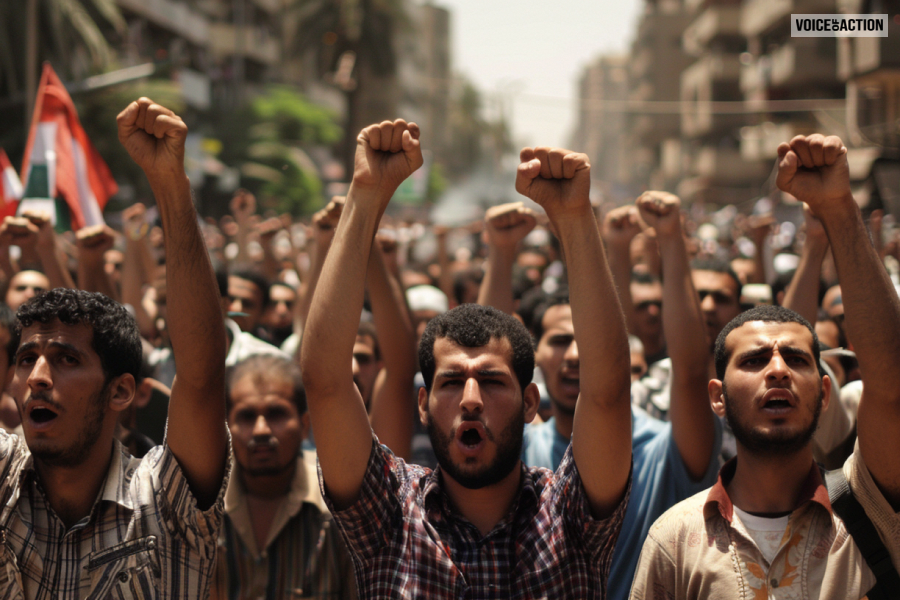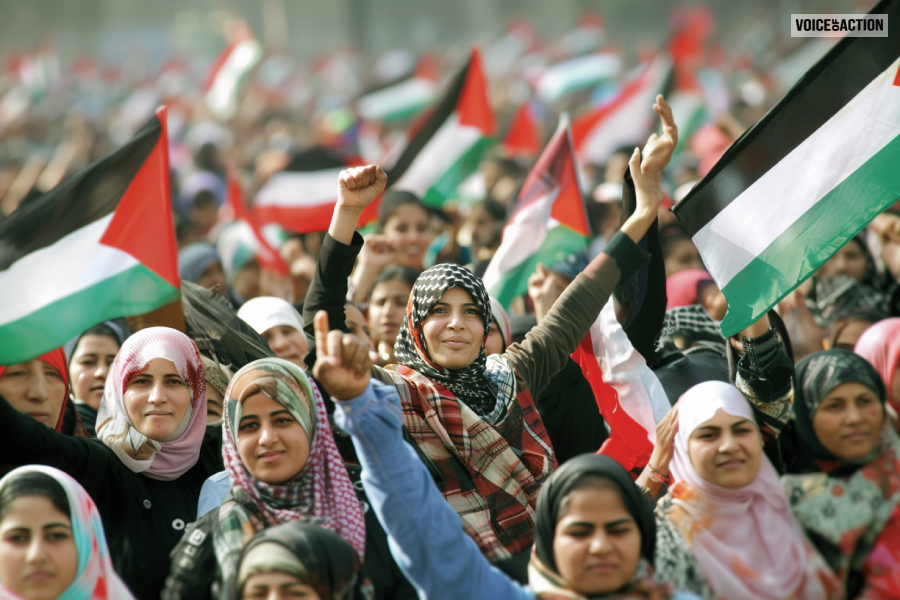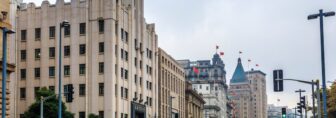The Arab Spring: How Social Media Fueled A Revolution

The Middle East was burning in a fire in the early 2010s to 2011 because of increasing corruption. The corrupt, authoritarian government in Tunisia and parts of North Africa gave another definition of dictatorship.
What was next? Protestors were highly triggered and aimed to diminish economic differences. The Arab Spring was the beginning of political right demand which took a much bigger form later in 2011.
It wasn’t too late when the capital got overwhelmed by protestors, and Zine al-Abidine Ben Ali, the president of Tunisian, was made to resign and leave the country.
Know what all happened throughout the movement in this article.
What Led To The Arab Spring?

Before we proceed into detail, let me give you a quick overview of the events that caused the movement.
Since 2008, Tunisia has been experiencing multiple conflicts including the Gafsa mining area protest. They continued for several months and included sit-ins, strikes, and rallies.
On the other side, Egypt’s labor protest was going strong for years and over 3000 protestors had been active since 2004. A significant demonstration was 6th April, 2008’s strike on al-Mahalla al-Kubra. It was a state-run textile factory right outside Cairo.
Next, the government began mobilizing to end the strike through riot police as well as infiltration. In some ways, the regime was successful, but the riots couldn’t have been completely curbed.
Back in Algeria…

Algeria was also facing discontent over a lot of issues. Robert Ford, US Ambassador’s February 2008 diplomatic cable, suggested that the country isn’t too happy with continued political alienation.
Social discontent remained consistent in various parts of Algeria along with food strikes every week. Every demonstration showed that not only was the Algerian government fragile but also corrupted.
Some even proceed to claim that 2010 was the year of over 9,700 unrests and riots occurring in the country. A lot of them were education and health-centric, while others focused on rampant corruption.
Depressing Situations in Western Sahara…
Western Sahara started facing troubles when El Aauin, a young Sahrawis group, constructed 12 12-kilometer Gdeim Izik Protest camp. This was 9th October 2010, and their primary motive was to protest against unemployment, looted resources, and labor discrimination.
More than 12,000-20,000 inhabitants took part in the camp, which was later sabotaged in November 2010. The Moroccan Security Force ensured to evict every single person in the camp, and to get back at them; young Sahrawi civilians started protesting.
When all these small protests joined together, it gave rise to the Arab Spring. It was a movement backed by several other reformations and protestors which had a motive much bigger than all the other ones.
Demonstrations and Uprisings In Different Parts Of The World

Arab Spring, after a series of demonstrations, began to be known by multiple names. Some called it the “Arab Awakening,” and some others referred to it as “Arab Uprisings.” But what was coming next in the Middle East and parts of Africa was not good news to the world. Here are some key events highlighted in the movement:
Tunisians’ Rage
It all began when Mohamed Bouazizi ablaze himself on 17th December 2010. He was a vegetable seller who protested against harassment from police personnel.
After he breathed last on January 4, 2011, President Zine El Abidine Ben Ali was accused of exceeding the cost of living in the country. Massive public outrage ended Ben Ali’s 23 years of rule, and he was forced to leave the country.
The Tunisian Spark inspired several revolts in the Middle East, and people began demonstrating against corruption, poverty, and authoritarianism.
January 25th Mubarak-Out in Egypt

Egyptians were influenced by Ben Ali’s dismissal, and they came out of their houses on 25th January 2011.
Even after multiple initiatives, the Egyptian Government could not control the protests. Consequently, enormous clashes and protests took place against Cairo’s security forces.
But things began changing when the Egyptian army declared that no force would be powered against activists willing to remove President Hosni Mubarak.
With no military support left in his favor, Mubarak, much like Ben Ali, had to leave his office after 30 years of power on 11th February.
Demands for Economic Reformation in Bahrain
In the race of protests, Bahrain did not lag behind. Demonstrators began demanding economic and political reforms starting from February 2011. Most of these movements were backed by human rights activists in the country and marginalized Shiʿi members of the country.
Bahraini security forces suppressed the protestors violently by enforcing a Gulf Cooperation Council. They entered Bahrain in March and stifled the protest by the month’s end.
As a result of the Arab Spring movement, a lot of antigovernment protestors were imprisoned, and various Shiʿi mosques were destroyed.
Libya’s line of distinction
As Bahrain protests began to take an ugly turn, the police in Libya didn’t sit silent either. They used force to demolish a sit-in against the Libyan government in the Benghazi city.
Muammar Gaddafi, who was then the leader of the country, pledged to search for every “rat” that opposed him.
The movement changed into a civil war where British, American, and French air forces started intervening against Gaddafi. He was later captured and killed on 20th October 2011 by rebels.
Currently, Libya is split between Western and Eastern-based administrations.
Bashing Assad in Syria
Pres. Bashar al-Assad was called for resignation when several protests burst out in Syria in March 2011. Responding to it, the Assad authority conducted a brutal crackdown against demonstrators.
International leaders frowned upon the act, and the Syrian government began facing attacks from Istanbul.
Even though the upheaval was robust, Assad had a powerful grip as he kept getting the support of multiple critical units.
Violence escalated in Syria, fed by arms and funding from indigenous rival nations, which eventually resulted in a life-threatening civil war.
What Was The Outcome Of The Movement?

The aftermath of the protest in several nations suggested a wave of violence as well as instability called the Arab Winter. Unlike the Arab Spring, Arab Winter had devastating civil wars, economic decline of Arabs, and general regional disruptions. Shia and Sunni Muslims began differentiating them from each other.
Expansion of various other public demonstrations
The long-term impacts of the movement are yet to be seen, but that doesn’t indicate that it did not have short-term effects. Places like Egypt and Tunisia might have bashed their existing authoritarian powers, but their success was considered short-term.
Egypt dealt with back-to-back turmoils as a response to subsequent political disruptions. Things were quite different in the monarchies of the Persian Gulf and Morocco.
Here, the current regimes accepted the Arab Spring demonstration and figured out how to maintain order without a lot of social changes. Countries like Libya and Syria witnessed an overall societal collapse in the name of protest.
Overthrow of long-standing leaders
Even till the existing date, countries that protested in the moovement could get no solid justice. There’s a massive division between reformers wanting a democratic change and those preferring the status quo.
Long-standing leaders like Ben Ali and Mubarak were made to leave their powers but there have been no differences when it comes to economic injustice. The biggest change from the pre-demonstration to the post-demonstration was the attempt to tarnish political elites.
It somehow managed to reshape the Middle East’s geopolitical structure. However, the changes brought down by the Arab Spring protests are predicted to bring a regional shift someday, thus changing the power structure quickly.
Humanitarian impact and civil unrest
Consistent repression of Muslims continued not only by the Egyptian military and courts but also by other Gulf nations and even Saudi Arabia. The crises by ambassadors majorly threatened activists of the GCC.
Secondly, enhanced political learning and caution were seen in Jordan and Algeria, where Islamists opted not to accept major governmental challenges. al-Islah in Yemen is keen on framing its ideology to avoid militancy charges.
Nations that opted for the transformation of society but couldn’t do so went in favor of anger and antagonism. Countries like Syria are still burning in the flames of hatred between the Middle East and other countries.
Deformation in military
Even in light terms, the national military forces received correlated support during the protests. Tunisian and Egypt both had equally active military forces participating in removing the incumbent regime.
Other nations like Syria and Libya could do nothing when striving to stop the protests and end the civil war. Supporting the Arab Spring military also had connections to the ethnic homogeneity degree in multiple societies.
Concluding Words: How Long Has Arab Spring Lived?
Every single protest that took place in 2011 was distinctive in nature and had interconnected goals for changing democracy. Sadly, the Arab Spring was not completely able to curb the presence of corruption and improve the quality of life in various countries.
For years to come, the protests will continue. Some might even take fierce form, while others might get suppressed by political powers. Irrespective of a malfunctioned authority, the reformation certainly gave voice to a lot of protestors.
Every individual protest that took in the course of the Arab Spring was rarely inspired by one another. However, the similarity and scale of their grievances matched the initial protest.
Continue Reading:

























